Inside the Nike Mind Team That Turned Neuroscience Into Footwear
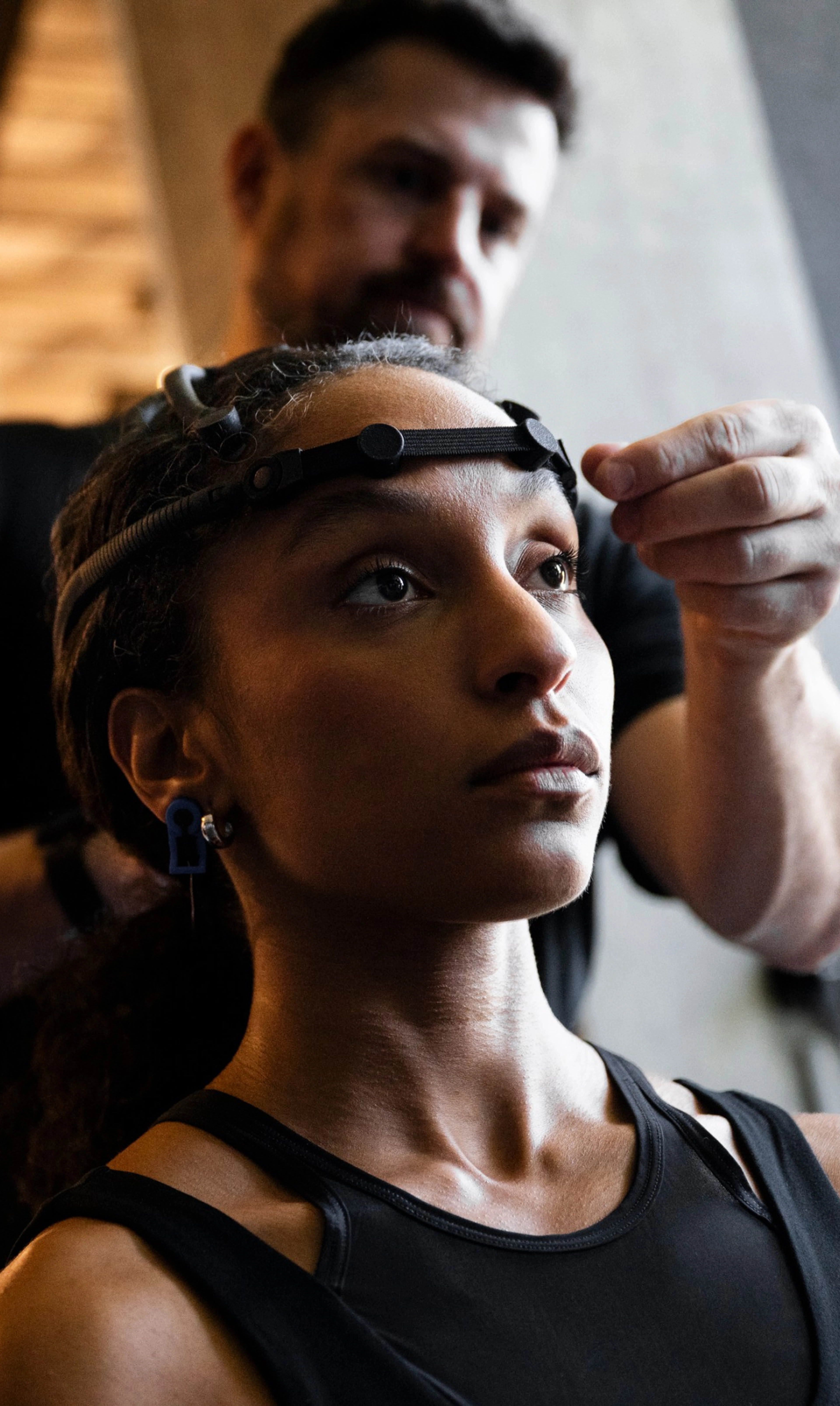
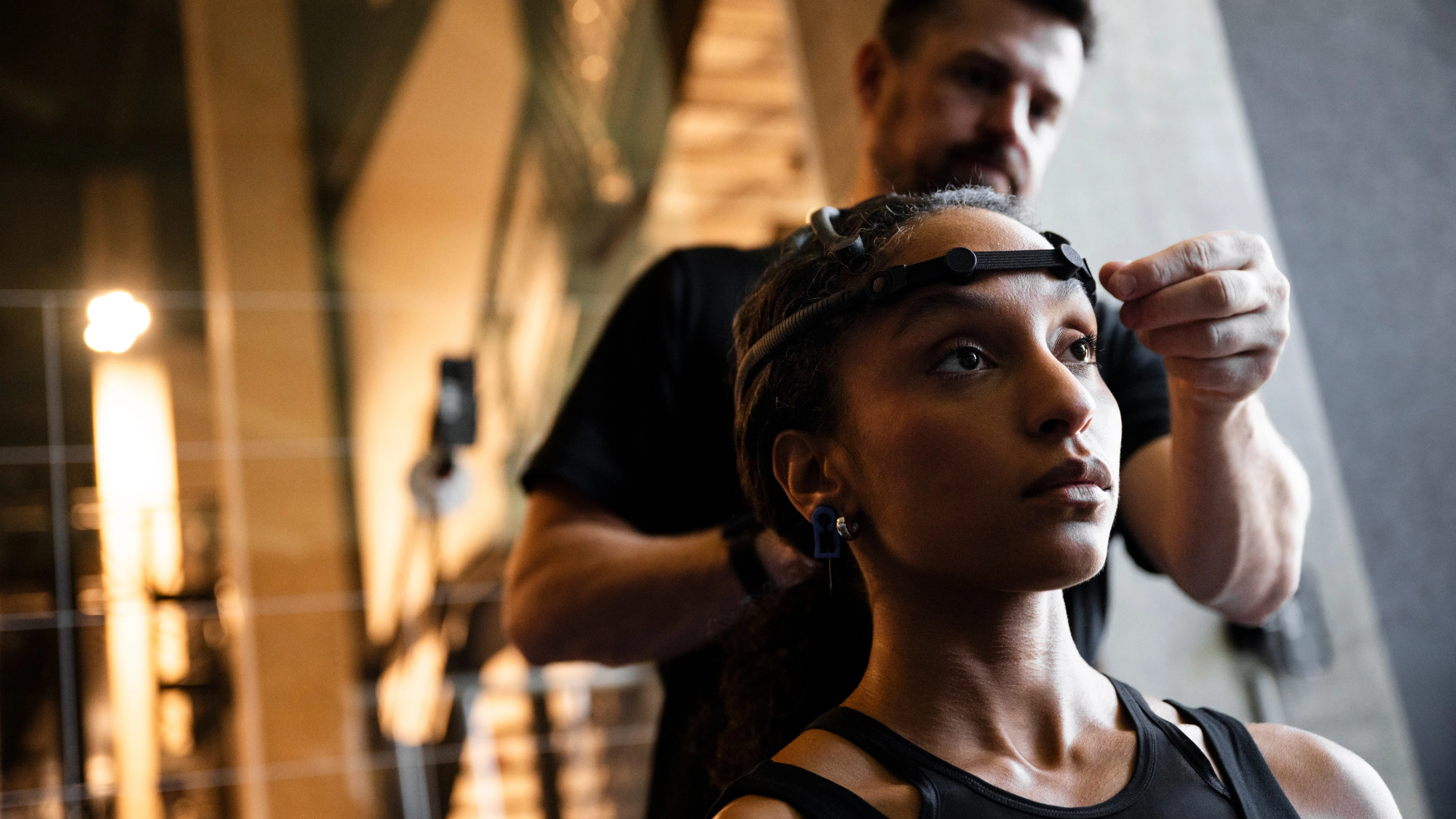
- October 23, 2025
- Words:
- Photos:
A neuroscientist, a computational engineer and an industrial designer sit at a desk, poring over the latest electroencephalography (EEG) and pressure-mapping results. Down the hall, pressure plates respond to steady footsteps while motion-capture sensors blink to life as another round of testing begins.
This isn’t a scene from a NASA work room or sci-fi Hollywood blockbuster — it’s a typical day at the LeBron James Innovation Center and its top floor Nike Sport Research Lab (NSRL), where dozens of scientists, engineers and designers come together to study every element of human performance.
While many people know this facility exists, few understand the full scope of its work, or that the research extends beyond the physical and into the mind itself. Led by world-renowned neuroresearchers, Nike’s Mind Science team is devoted to exploring how the brain and body interact to shape the future of athletic performance.
Their latest breakthrough, Nike Mind, is a sensory footwear platform more than a decade in the making that aims to redefine how athletes prime for and recover from competition.
We sat down with seven Nike Mind teammates to learn how this long-awaited technology moved from concept to reality.
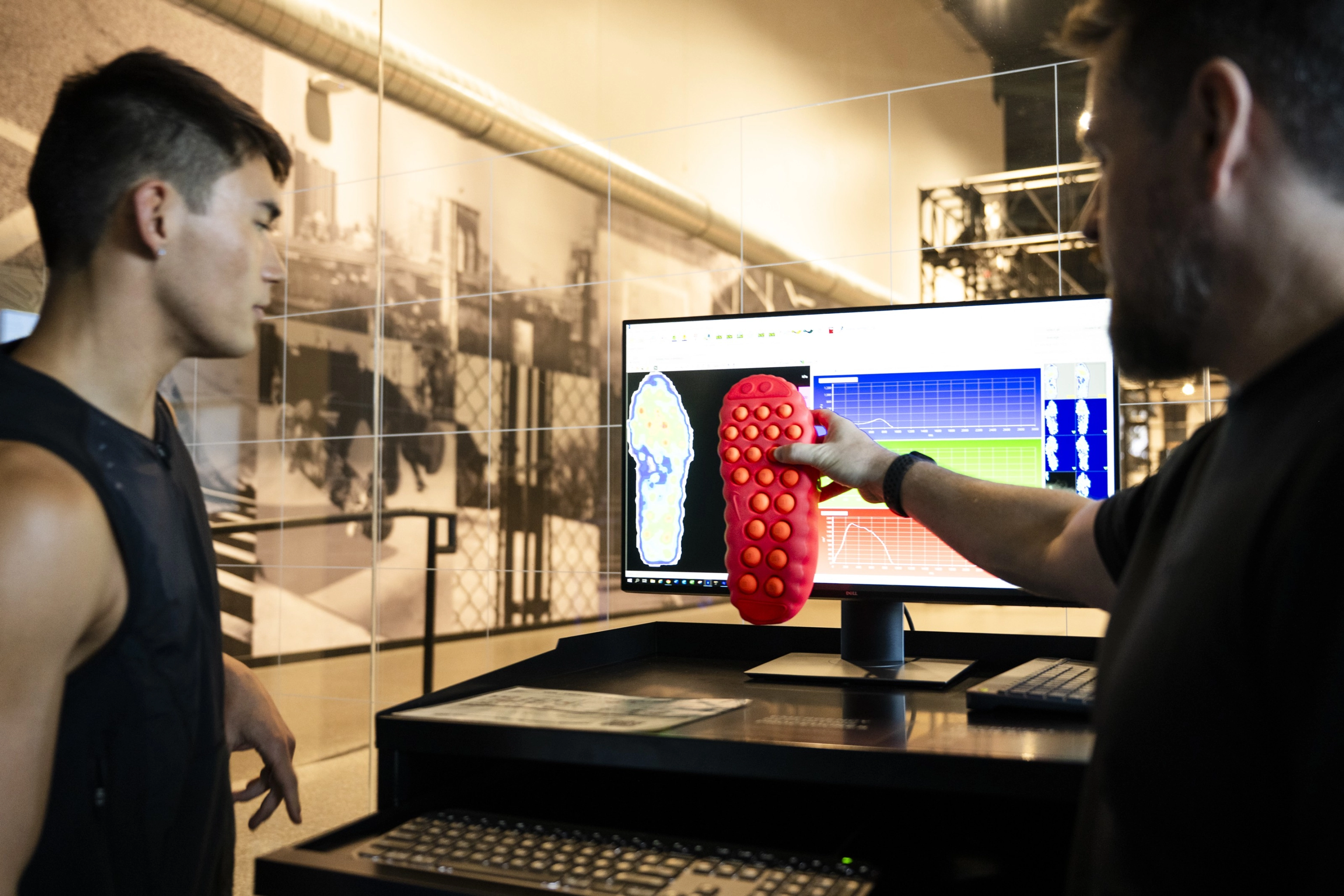
"We have neuroscientists, perception researchers, physiologists and engineers all working together. We can prototype, test with athletes and iterate at a pace no one else can. It’s a capability that sets Nike apart."
Graeme Moffat, PhD, Principal Researcher, NSRL
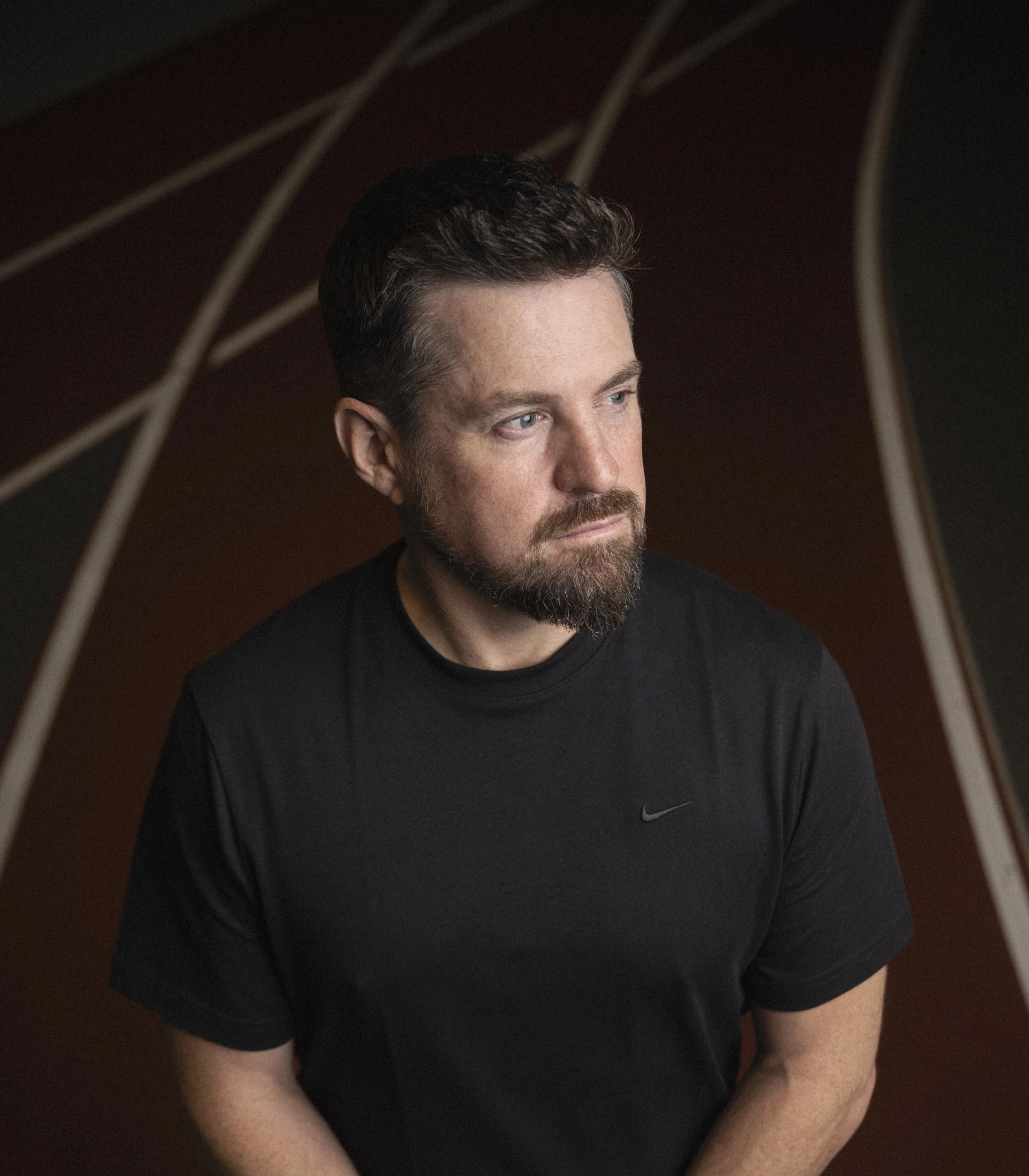
THE NEURAL ARCHITECT: GRAEME MOFFAT, PHD
Principal Researcher, Nike Sport Research Lab
As principal researcher on Nike’s Mind Science team, Graeme Moffat leads the neuroscience behind Nike Mind — decoding EEG readouts, pressure maps and muscle signals to understand how sensation shapes focus and performance. With a background in brain-computer interface research, he’s helping translate the science of perception into design principles that can be felt underfoot. For Moffat, this project isn’t just about a new shoe. It’s about proving how the mind and body can be trained together through sensation.
One of the easiest ways to get out of your head is to get into your body — to actively engage your senses. With Nike Mind, what we see in the brain is increased activity in the sensory motor network and a rise in alpha oscillations linked to relaxed alertness.
Like your hands, the bottom of your feet have unique skin with 10 to 20 times more mechanoreceptors than most other areas. These are the parts of our body to feel and navigate the world. To complement this, each node in Nike Mind moves independently, shifting slightly to translate force through the bottom of the foot. The result is a more direct connection to the ground.
We used sensory science to determine the placement of the 22 nodes. By measuring what’s called the two-point discrimination threshold — how far apart touches have to be before you feel them as separate — we were able to map the density of receptors across the foot. That’s why nodes are more closely spaced in the forefoot and wider apart in the heel.
We used everything: underfoot plantar-pressure sensors, electromyography of the lower limbs and human EEG. Athletes walked in the shoes and comparator models while we measured their brains before, during and after. What we saw were clear differences in brain activation and oscillation patterns, signals that reflected how the sensory system in this shoe was activating the brain. This is a completely new way to make footwear, designed from the sensory system outward. It took nearly 10 years of research and iteration to make it work.
It is incredible technology. It's like a walking anti-fatigue mat built into my shoes. It's just a fantastic feeling. I don't want to take them off at the end of the day.
The Mind Science team itself is unique. We have neuroscientists, perception researchers, physiologists and engineers all working together. It’s a mix of disciplines that normally don’t sit inside a company like Nike, and it allows us to move from deep scientific insight to real product innovation quickly. We can prototype, test with athletes and iterate at a pace no one else can. It’s a capability that sets Nike apart.
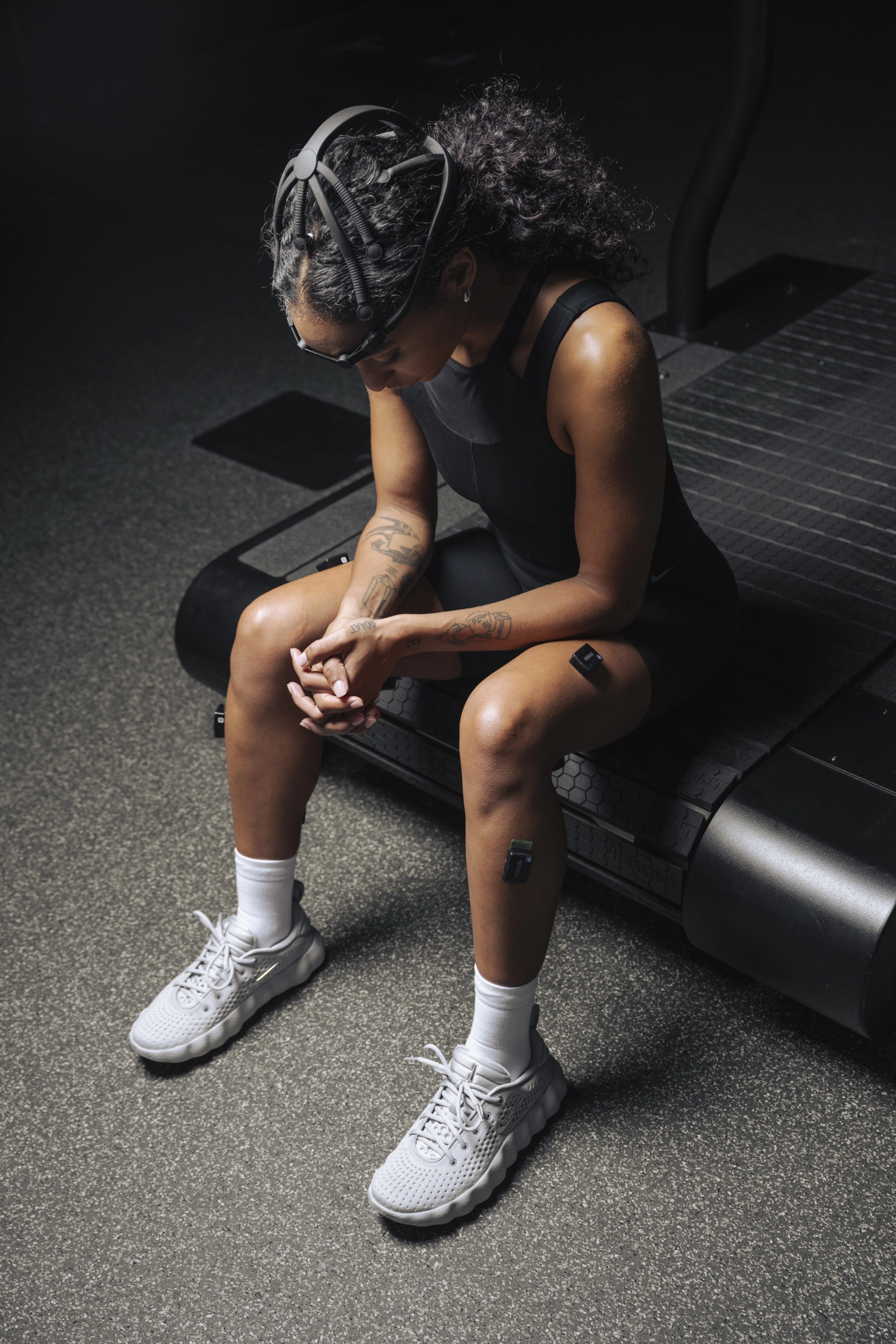
"For the first 45 years, Nike’s research focused on the body from the neck down. The next forty-five will include the brain."
Trevor Barss, PhD, Lead Researcher, Mind Sciences Team
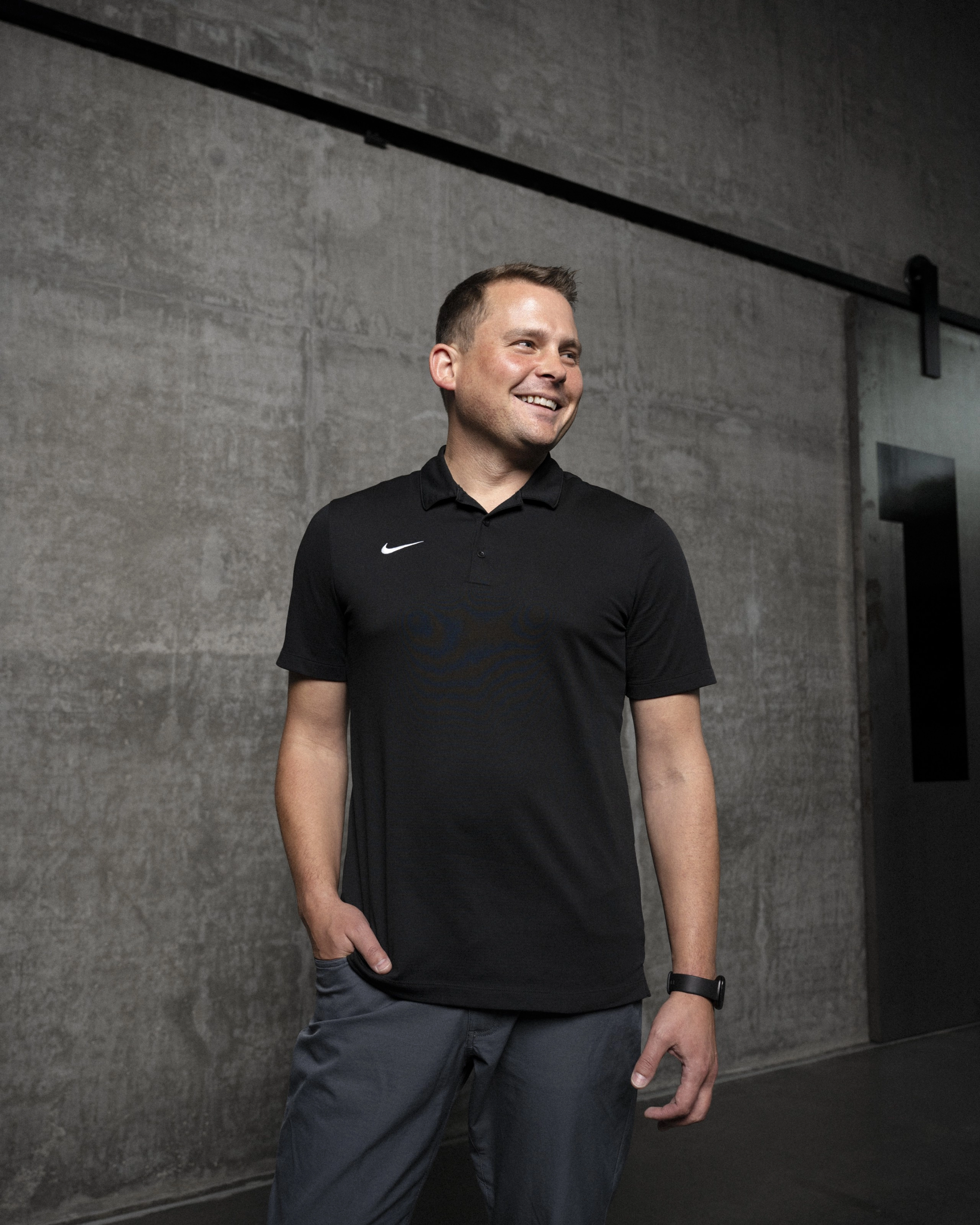
THE BRAIN MAPPER: TREVOR BARSS, PHD
Lead Researcher, Mind Sciences Team
Working alongside Moffat, Trevor Barss helped run the early neuroscience studies that defined Nike Mind’s foundation. A sensory neuroscientist specializing in neurophysiology, he used EEG and other measures to study how tactile feedback changes patterns of brain activity, the signals linking movement, focus and awareness. The team’s findings revealed distinct shifts in sensory-motor activation and alpha rhythms when athletes wore Nike Mind footwear, insights that continue to shape how the NSRL explores the mind–body connection.
For the first 45 years, Nike’s research focused on the body from the neck down. The next forty-five will include the brain.
My role was to study unique aspects of brain activation while athletes were wearing the footwear. We measured electrical activity in the brain before, during and after movement and paired that with perception data. The goal was to connect what athletes reported feeling with what we could actually see happening neurologically.
We found that this collaboration between perception and neuroscience is what gives the work its power. You might detect increased activation in one region of the brain but without understanding the athlete’s experience, you don’t know whether that’s good or bad. When you combine both, you get meaning.
When I first arrived at Nike, I was amazed by the environment. In most research settings, if you want to talk to an expert outside your field, you email, you schedule, you wait. Here, I can walk three desks over and have a conversation with someone who is a world-class expert in biomechanics, physiology or materials science. That proximity accelerates everything.
The strength of this lab is its seamless flow of expertise. Neuroscientists, engineers, designers and developers work side by side, testing, iterating and learning from each other in real time. It removes silos and sparks ideas that none of us could reach alone.
We’re at the starting line of an entirely new field. The methods are established but applying them to footwear and apparel is uncharted territory. Each experiment raises new questions.
For me, the most inspiring part is being surrounded by brilliant minds who share that curiosity. When you pair deep scientific expertise with creative design thinking, you open doors to discoveries that redefine what performance can mean.
Looking ahead, the possibilities are endless. We have sensory receptors all over our body. Anytime you change sensory input, you’re interacting with your nervous system. Delving into that connection could open up whole new ways of supporting athlete awareness, focus and recovery.
"For me, this has been a dream job I didn’t know existed. I get to combine tough technical work with the creativity of working alongside designers, sports researchers and other specialists."
Elizabeth Raissian, Senior Computational Engineer
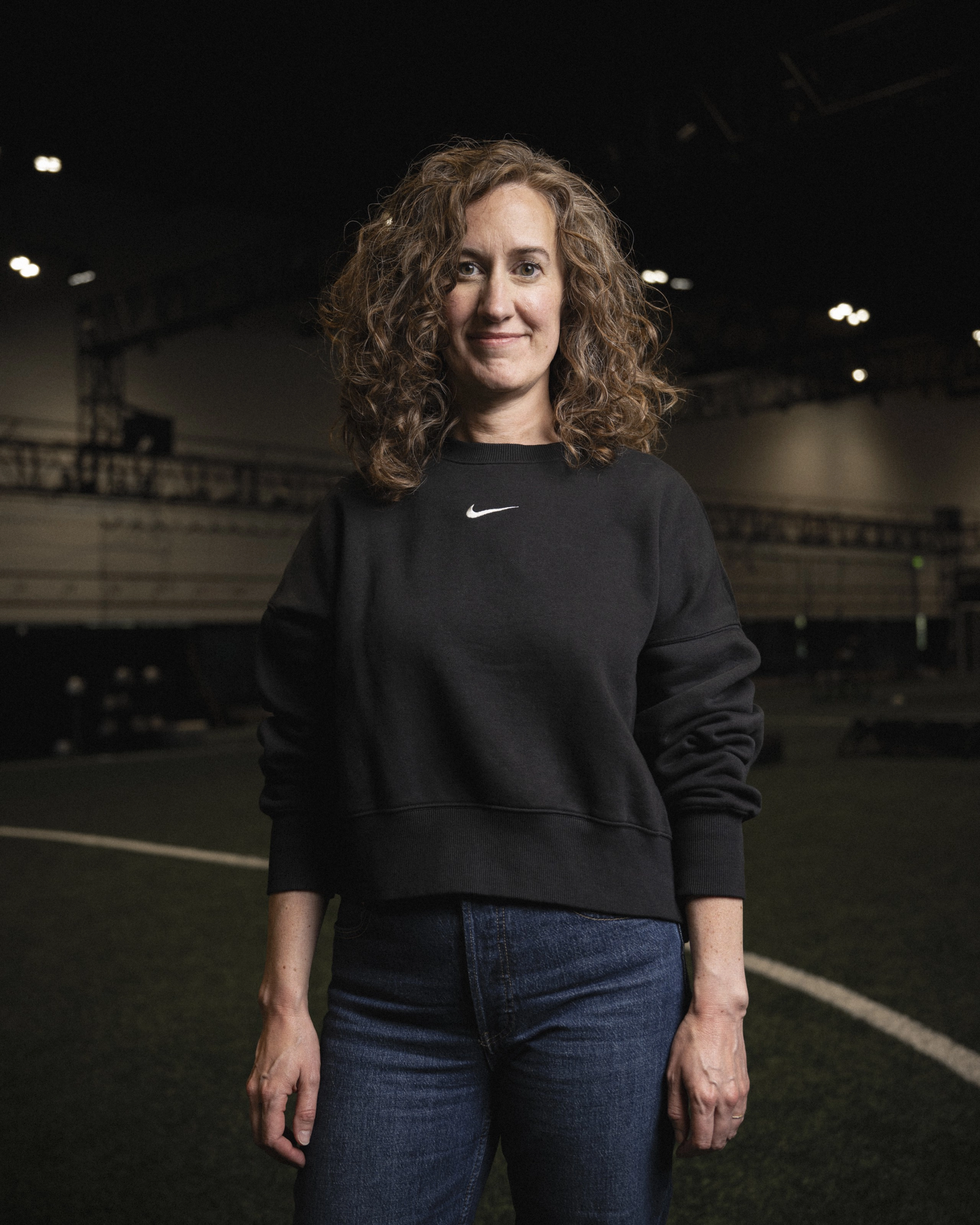
THE ENGINEERING WIZ: ELIZABETH RAISSIAN
Senior Director, Performance Engineering
Inside Nike’s Performance Engineering Lab, Elizabeth Raissian’s work lies at the intersection of product functionality and code. For Nike Mind, she and her team built the digital framework that made the concept manufacturable at scale, using Finite Element Analysis (FEA) and simulation tools to model how each node, flex point and pressure zone behaves underfoot. Their modeling ensured a precisely tuned sensorial design that delivers consistent feel and feedback across every size and stride.
The big unlock was using computational methods to crack the scale challenge. Nike Mind has many small parts within a larger system. We wrote scripts that determined where each node needed to be for athlete performance and how those placements could still be manufactured consistently.
Our goal was to make sure every athlete has the same experience no matter their shoe size. We used FEA to test variables like node size, height and material. That helped us identify the sweet spot between too much and not enough sensation. Once we had that, we could scale it proportionally across sizes so the product felt consistent from end to end.
For me, this has been a dream job I didn’t know existed. I get to combine tough technical work with the creativity of working alongside designers, sports researchers and other specialists. After 23 years, I still haven’t been bored.
What excites me most is how fast the tools are evolving. We’ve built a strong foundation and now new technologies are coming in that let us do things we wouldn’t have thought possible a decade ago. It changes how we approach products and opens doors for the future.
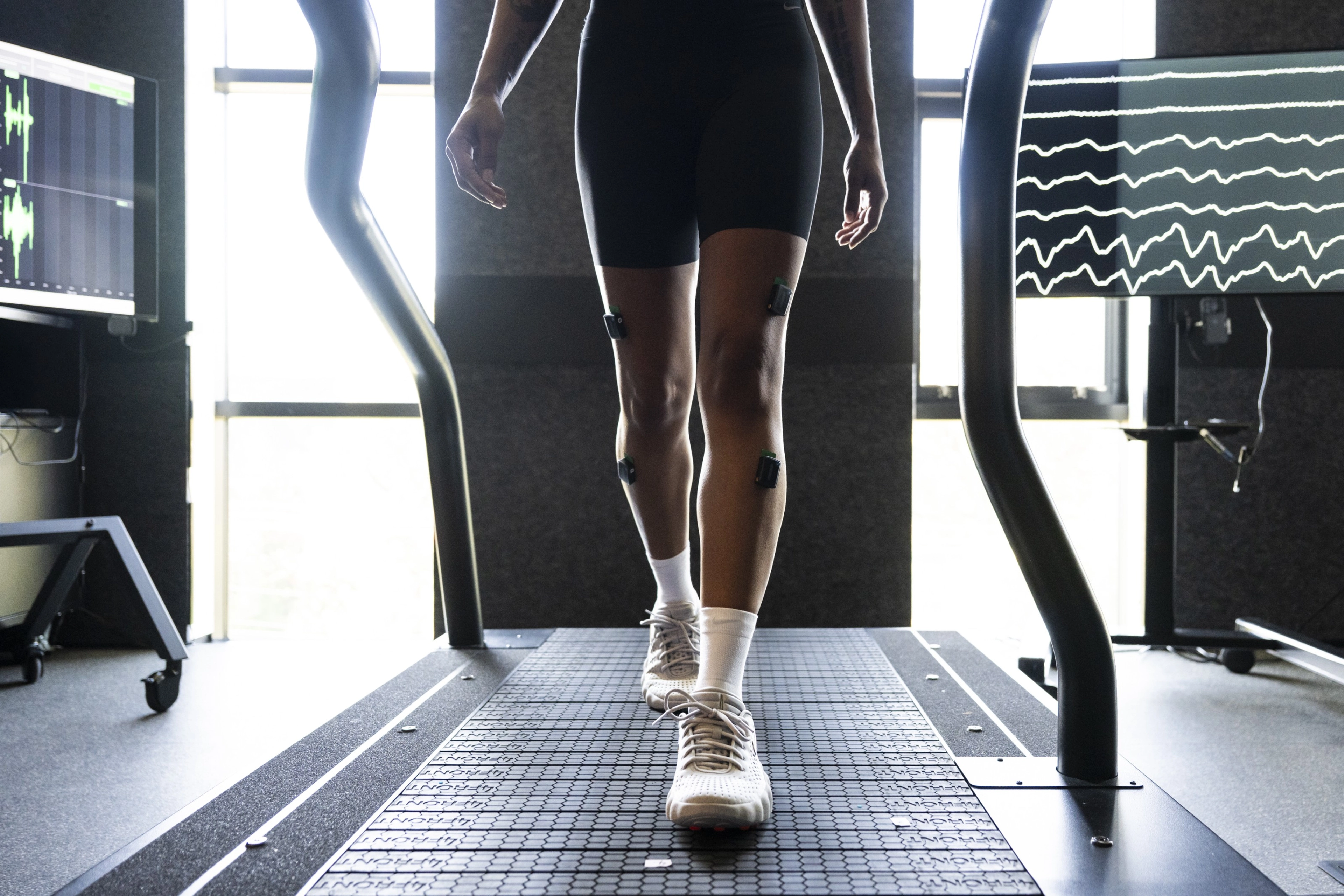
"There were moments we thought, this is too difficult, maybe we can’t do it. But we always asked ourselves: are we truly doing the best we can or is there another way?"
Sean Lu, Footwear Developer
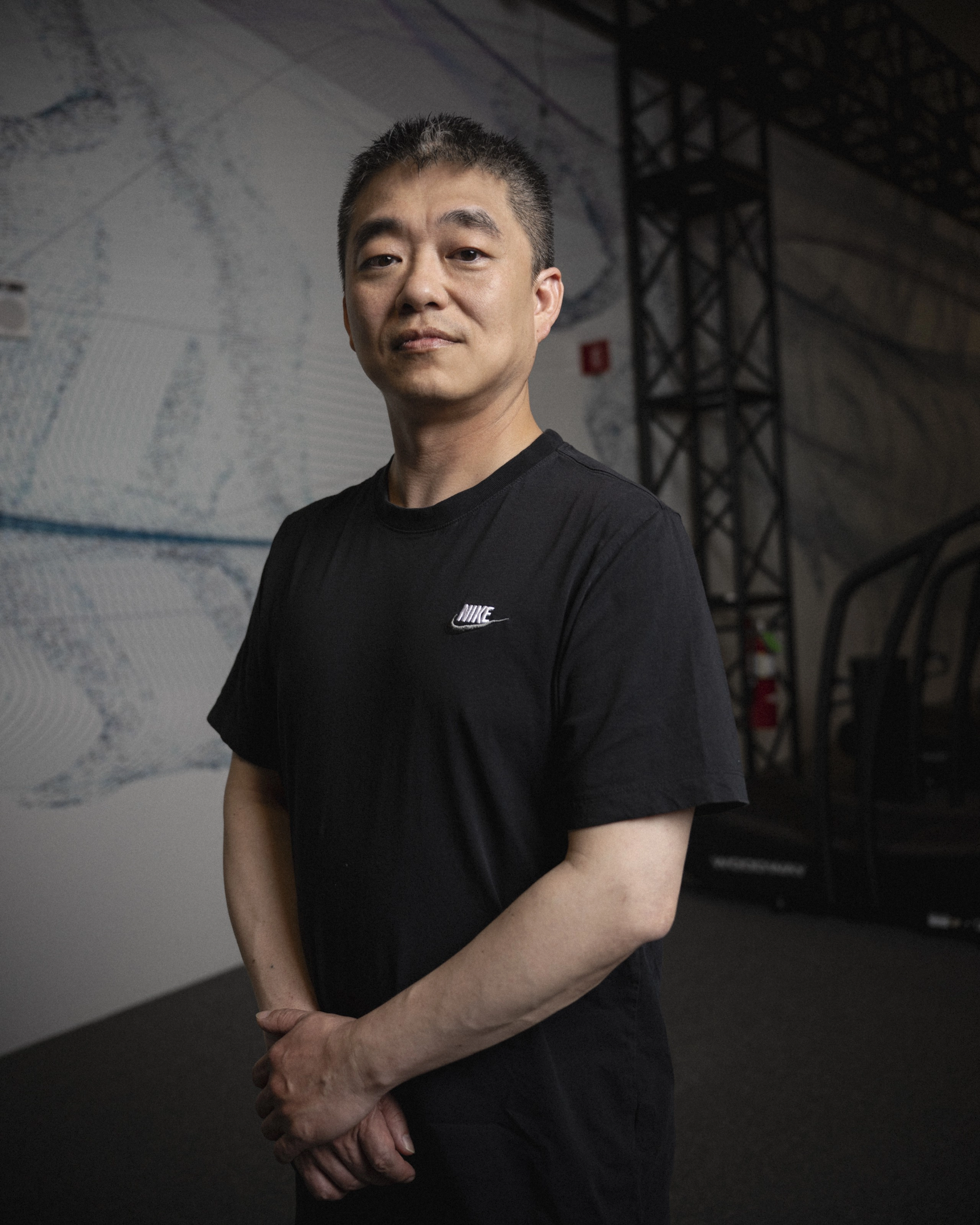
THE BRIDGE BUILDER: SEAN LU
Footwear Developer
For more than two decades, Sean Lu has helped take Nike’s boldest concepts from prototype to production. As a developer, he works at the crucial handoff point where innovation meets scaling the shoe production for Nike’s business. On Nike Mind, that meant solving unprecedented production challenges like how to create and bond 22 independent cushioning nodes while preserving the precise sensory design that makes the technology groundbreaking.
My expertise is to bring a design to life by practicing project management and leadership while working closely with many different functional teams. The goal is always both team excellence and product excellence, making sure the product meets the brief, the design intent, is tested and proven.
The biggest challenge was producing and attaching 22 individual nodes in a consistent way. Regular shoes might have five or six major parts. Here we had 22, each needing to be made and bonded precisely. Solving that required new methods of make very different from conventional shoemaking.
One crucial breakthrough was the stretchy strobel. In normal shoes it’s stiff. But here it had to stretch multidirectionally so the nodes could move freely and transfer sensation. Without that, the whole system wouldn’t work.
There were moments we thought, this is too difficult, maybe we can’t do it. But we always asked ourselves: are we truly doing the best we can or is there another way? Once you achieve it, the value for the athlete makes it all worth it.
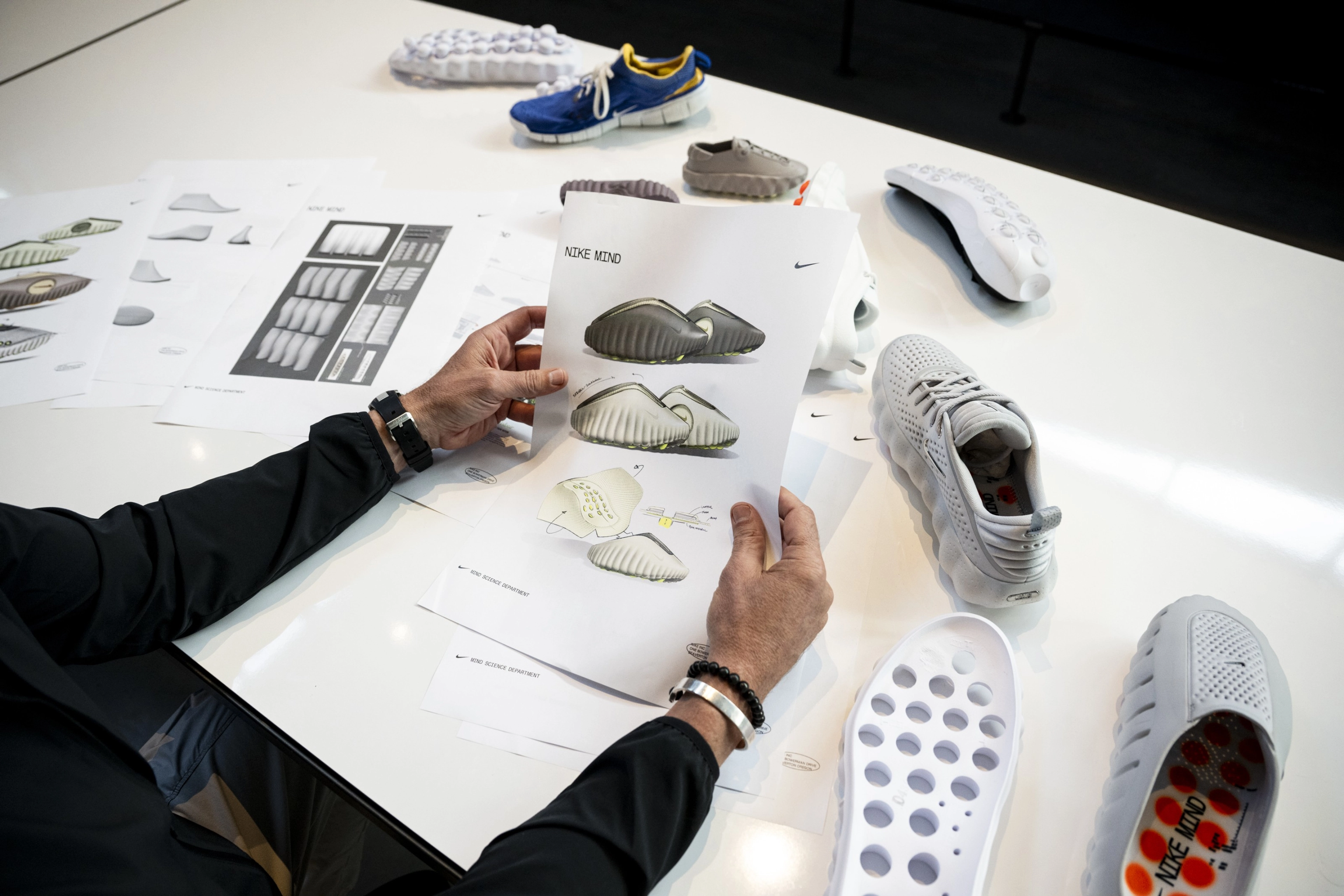
"What I love most about this new technology is that it represents the unknown. It’s a reminder that performance isn’t only about going faster. It’s about feeling more, thinking deeper and reconnecting with the moment."
Eric Avar, VP, Creative Director, Innovation
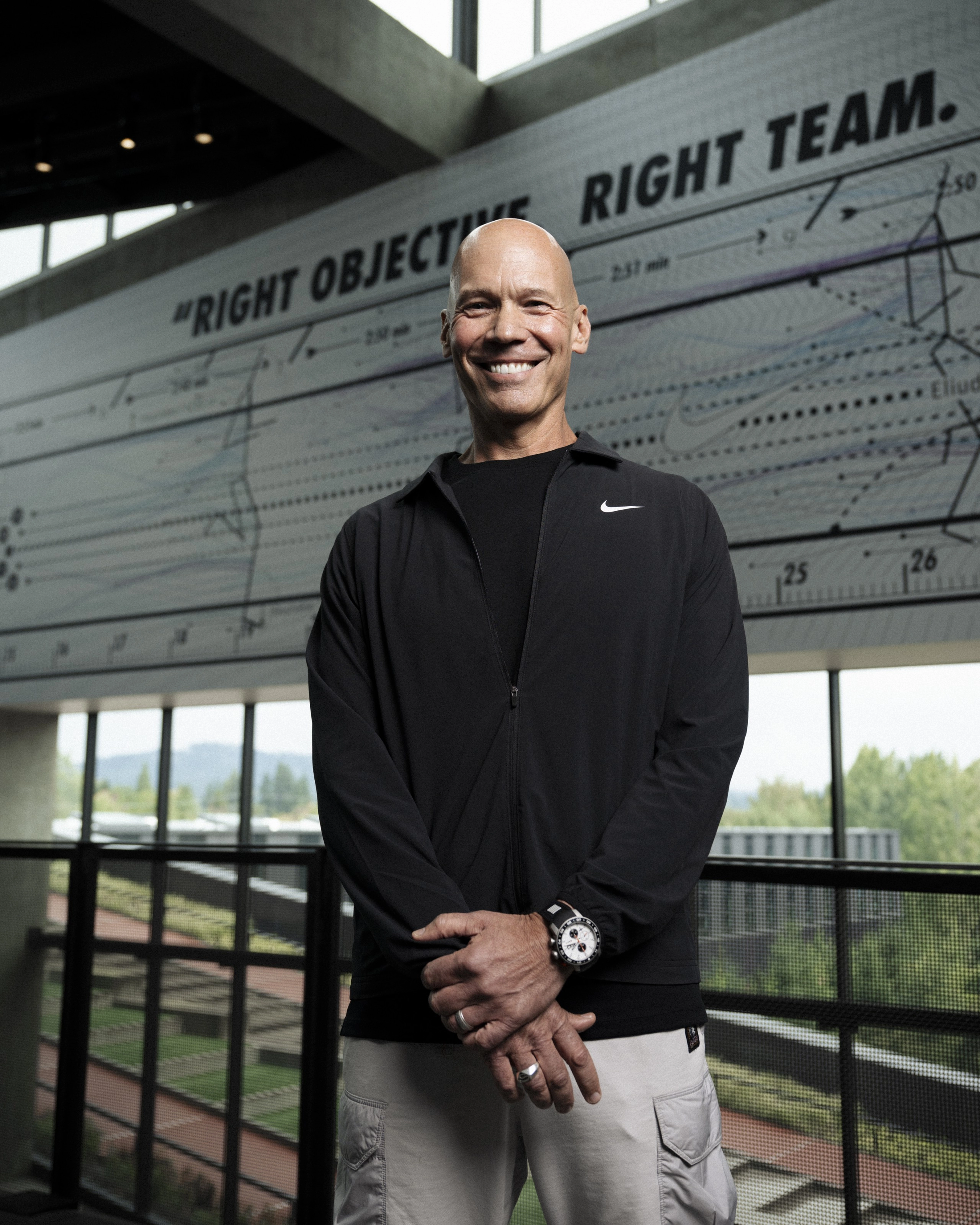
THE CREATIVE VISIONARY: ERIC AVAR
VP, Creative Director, Innovation
Few designers have shaped Nike’s visual and performance language more than Eric Avar. After spending decades creating some of the brand’s most iconic footwear from Foamposite to Free to the Kobe line, Avar joined the Nike Mind project to help translate complex neuroscience into design. His focus: find simplicity, stay curious and create a shoe that reawakens the body’s natural connection to movement.
What made this project next-level was the chance to forget everything we knew about traditional footwear. Instead of chasing propulsion or flight, we asked how to create a more natural sensory underfoot experience — one that could strengthen the mind-body connection to help make athletes feel calm, focused and present.
My role was to help guide the creative vision. To connect the macro and micro details of science, art and story. The best ideas happen when those dimensions align. My job was to help the team see the true north and to bring clarity to how the science should feel once it’s on foot.
Every dimension of this project was new — new science, new engineering, new design language. Each insight from the lab reshaped how we approached materials or geometry and every prototype fed new questions back to the scientists. That constant back-and-forth was where the breakthroughs happened.
Performance design is always a balance. Too much cushioning and you lose sensation; too much sensation and it becomes overwhelming. Our challenge was to find harmony between comfort, clarity and awareness.
This feels like a new frontier — a new paradigm of performance. We’re proving through science but we’re also discovering through intuition. The more we lean into that mix of curiosity and expertise, the more magic we’ll uncover.
What I love most about this new technology is that it represents the unknown. It’s a reminder that performance isn’t only about going faster. It’s about feeling more, thinking deeper and reconnecting with the moment.
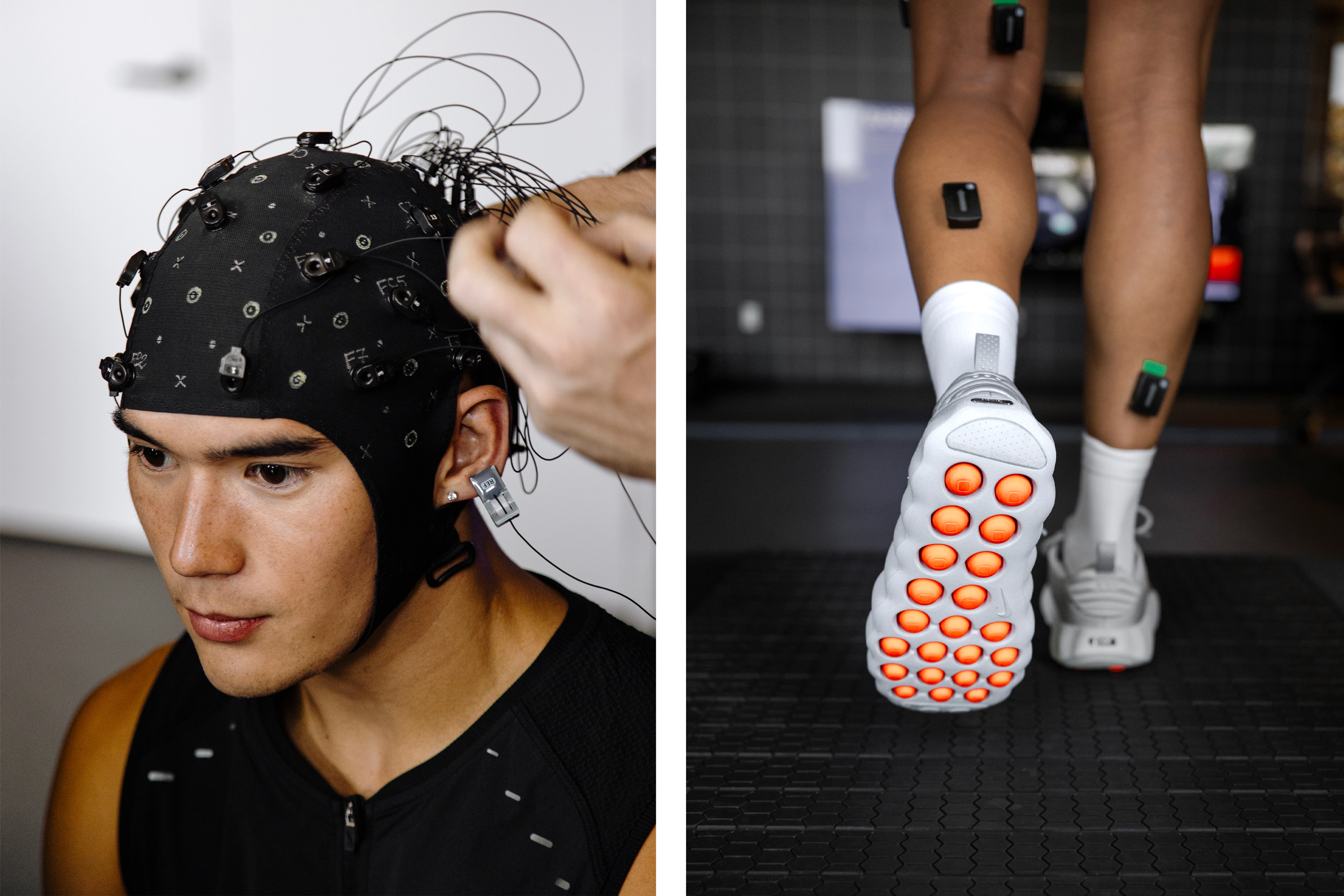
"If the body is the engine, the mind is the driver. With Nike Mind, we’re starting to think about how to make the driver sharper and clearer."
Matthew Nurse, PhD, Chief Science Officer, NIKE, Inc.
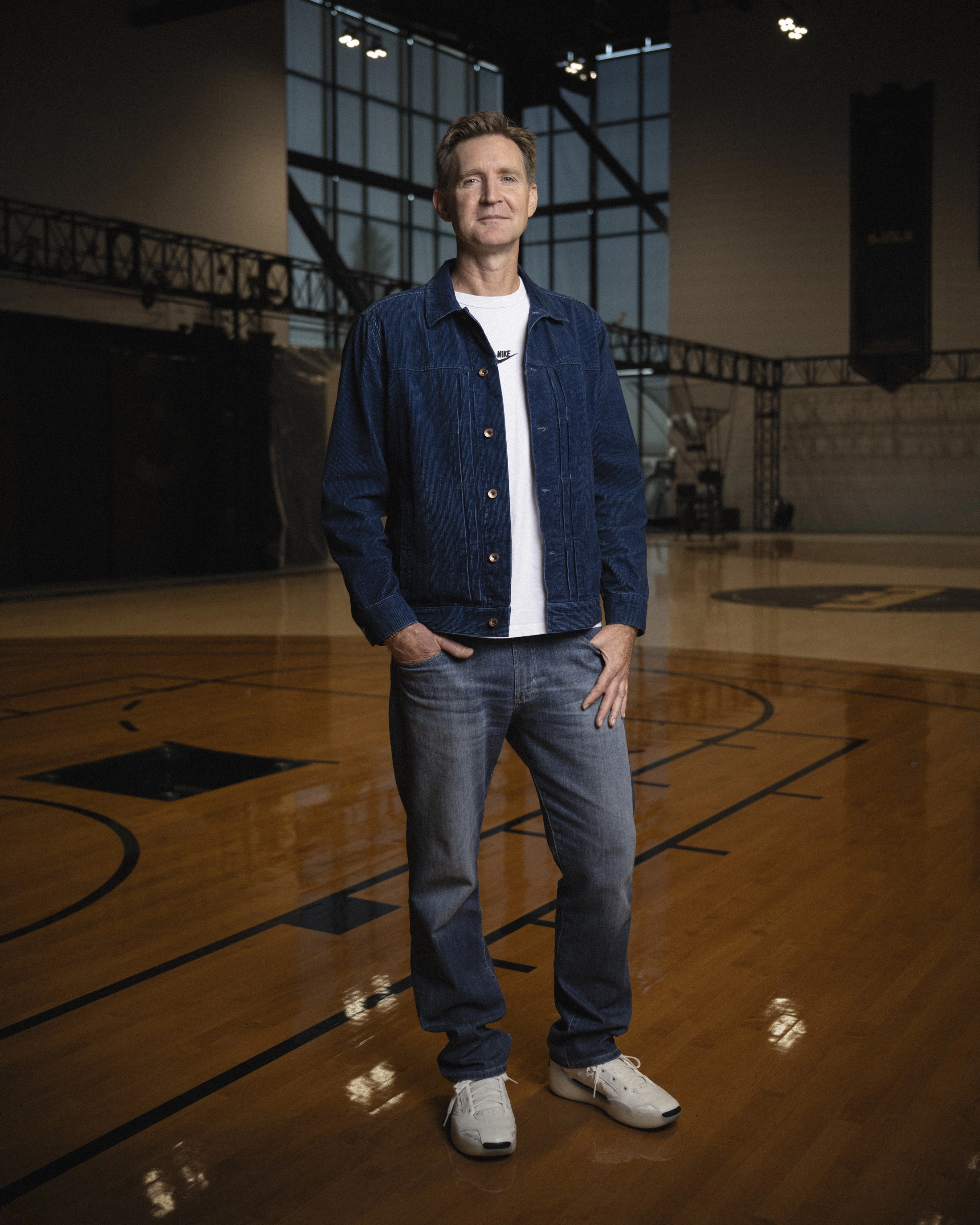
THE MASTER ORCHESTRATOR: MATTHEW NURSE, PHD
Chief Science Officer, NIKE, Inc.
With a background spanning biomechanics, physiology and performance research, Matthew Nurse has guided Nike’s most ambitious science-led innovations. As Chief Science Officer, he oversaw the Nike Mind project from a multidisciplinary vantage, coordinating scientists, designers and engineers to keep the various parts moving in sync.
Most people don’t fully appreciate the importance of sensory feedback from the body, especially the feet. The foot is full of thousands of sensors that give the brain constant information about balance, position and spatial awareness. This is the first product built with the intent of influencing that feedback to help athletes stay focused, present and more aware of their environment.
If the body is the engine, the mind is the driver. With Nike Mind, we’re starting to think about how to make the driver sharper and clearer. Mental preparation has become just as important as physical and we’re only scratching the surface of what’s possible.
Science and creativity have to leapfrog each other. Science shouldn’t limit dreams but it can help target them. Some of these concepts aren’t new but only now do we have the design and manufacturing capabilities to make them real. Building floating, independent nodes that compress and rotate to deliver sensory information to the brain wasn’t possible 20 years ago. Today it is.
Athlete feedback drove everything. We went through hundreds of iterations, tuning the number, density, flexibility and placement of the nodes to make sure the sensation was enough to feel and focus on but not so much that it became distracting. It had to be “just right” and only athletes could tell us where that balance was.
The beauty of Nike Mind is that beyond feeling grounded, you are grounded. Using tools like EEG, we’ve measured changes in brain activity in the areas linked to focus and presence. That’s the first time we’ve been able to show — and prove — that footwear construction can influence how the mind works.
And this is only chapter one. We’ve focused on the body for decades. Now, as we look at the mind alongside it, the opportunities for athletes are limitless.
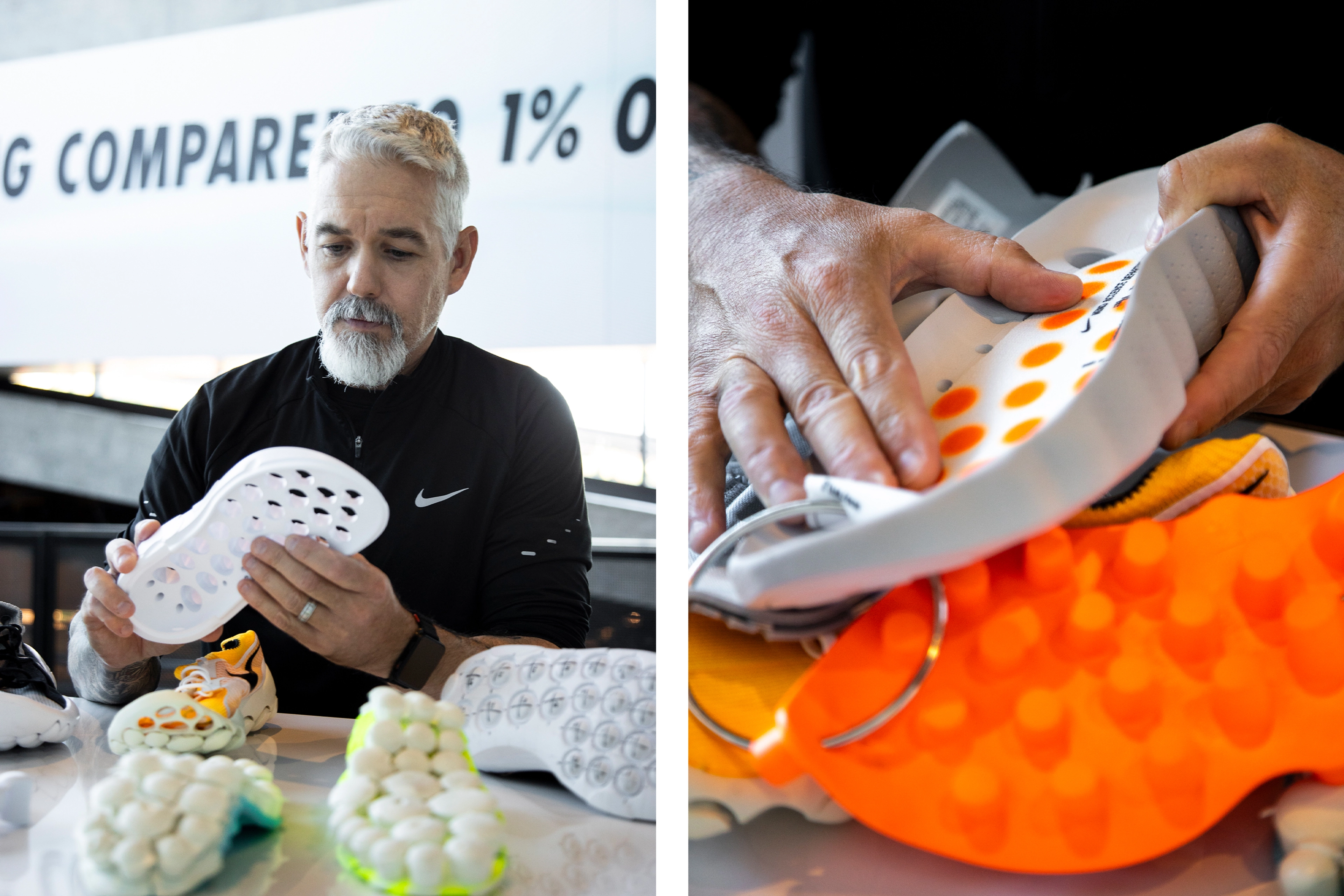
"We’d failed to solve sensory footwear for 10 years but each attempt taught us something. We have the patience and persistence to keep asking the big questions and the resources to finally crack them."
Bryan Youngs, Innovation Program Director, Footwear
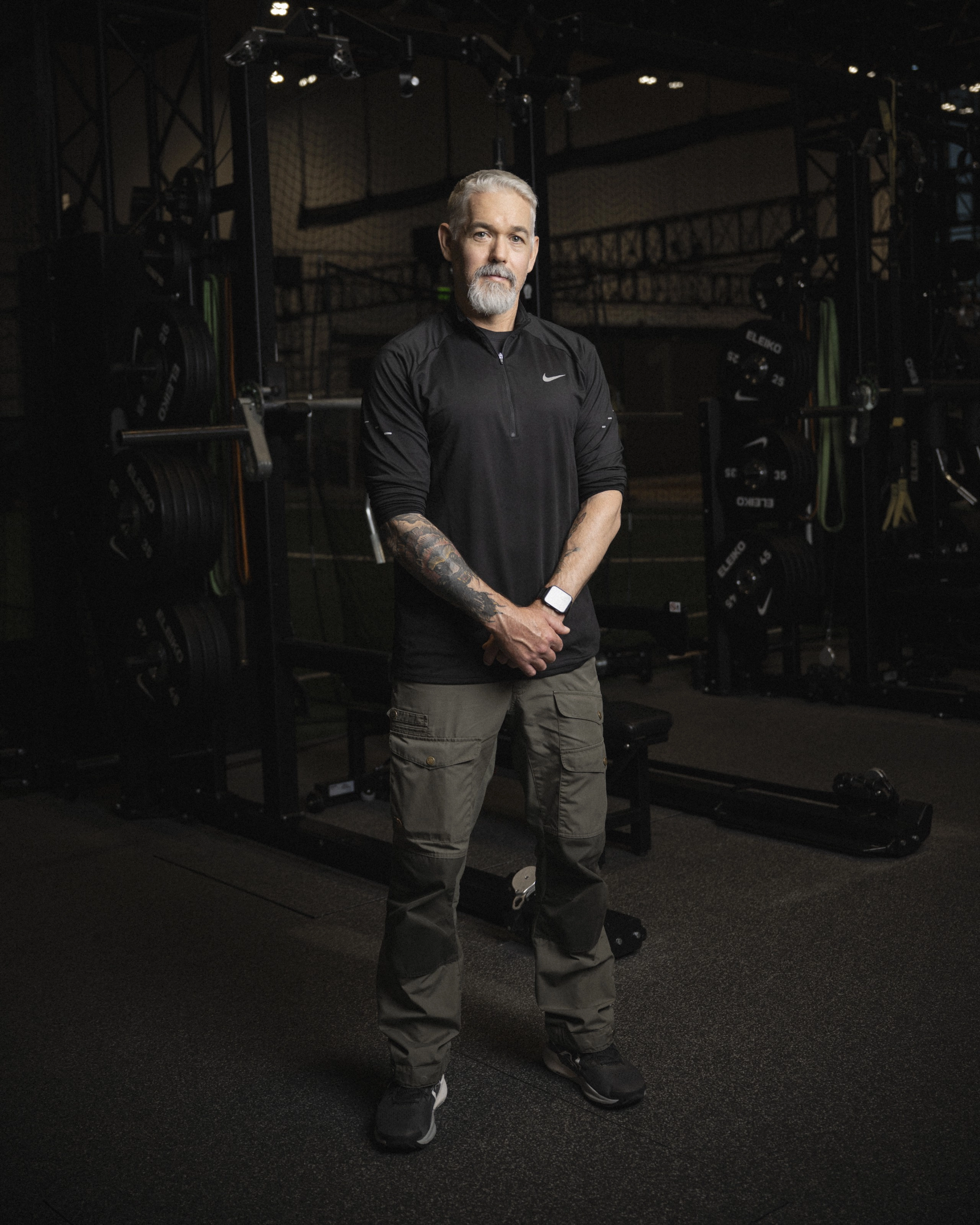
THE PROBLEM SOLVER: BRYAN YOUNGS
Innovation Program Director, Footwear
Bryan Youngs brings more than 20 years of footwear expertise focused on transforming innovation into manufacturable reality. For Nike Mind, he led the scale-up effort, translating a handcrafted sensory prototype into a system that could be produced consistently and reliably. By bridging advanced innovation with global manufacturing, he helped ensure the concept could move from lab experiment to product launch.
The idea of sensory footwear has been around for a decade but the challenge was scale. For years it was an arts-and-crafts project — something you could hand-make but not mass-produce. With MIND, we had to move past that to create something we could build with our manufacturing partners while still preserving the complex architecture underfoot.
With our manufacturing partners, we developed a system that simplified the build from dozens of individual attachments down to just a few key steps. That shift allowed us to replicate the sensorial experience athletes loved from the earliest prototypes while making it manufacturable at scale.
Our willingness to wrestle with the hardest problems is something that makes Nike very unique. We’d failed to solve sensory footwear for 10 years but each attempt taught us something. We have the willingness to keep asking the big questions and then the patience and persistence to finally crack them. With these two new products, we’re just getting started.